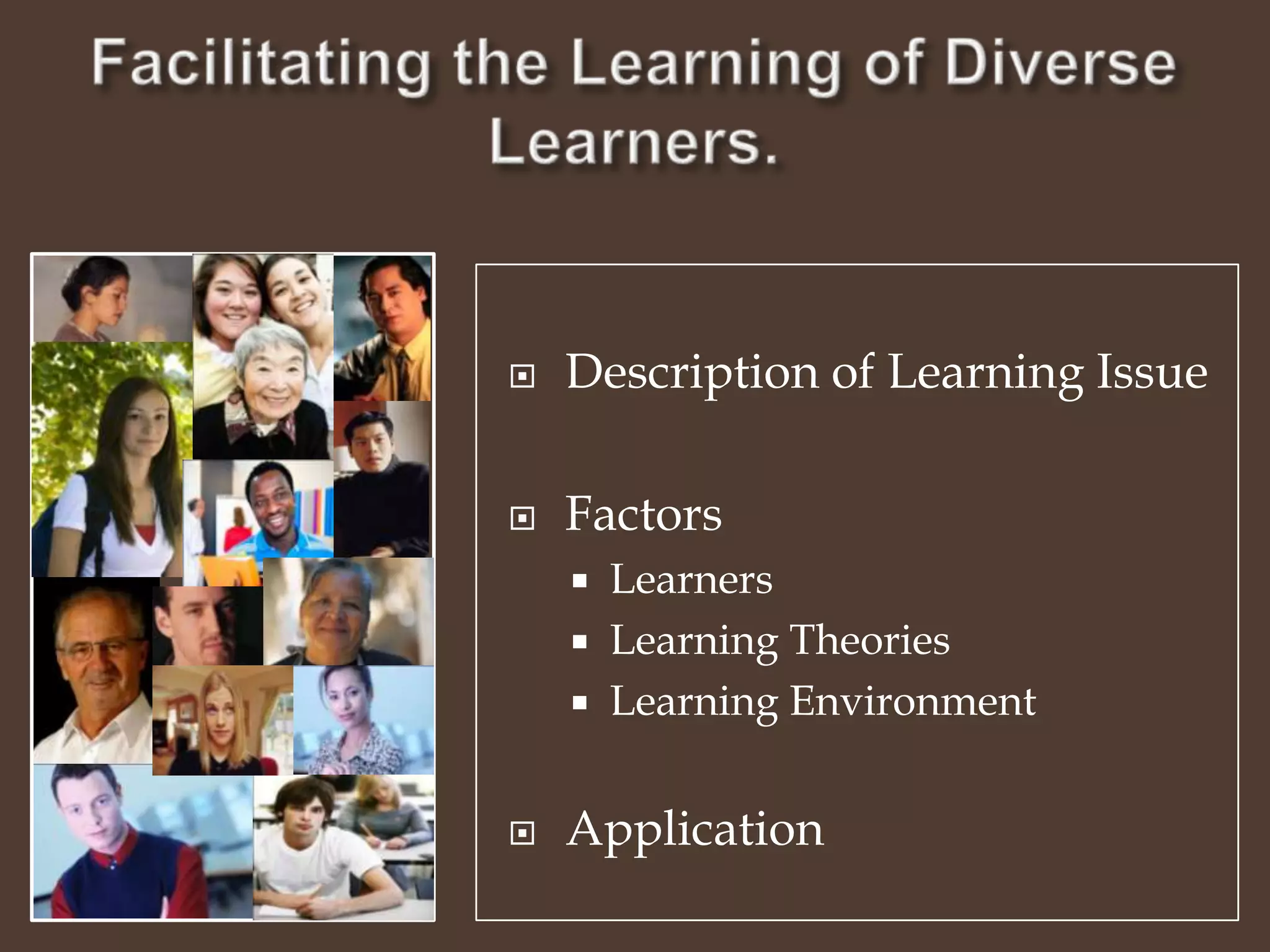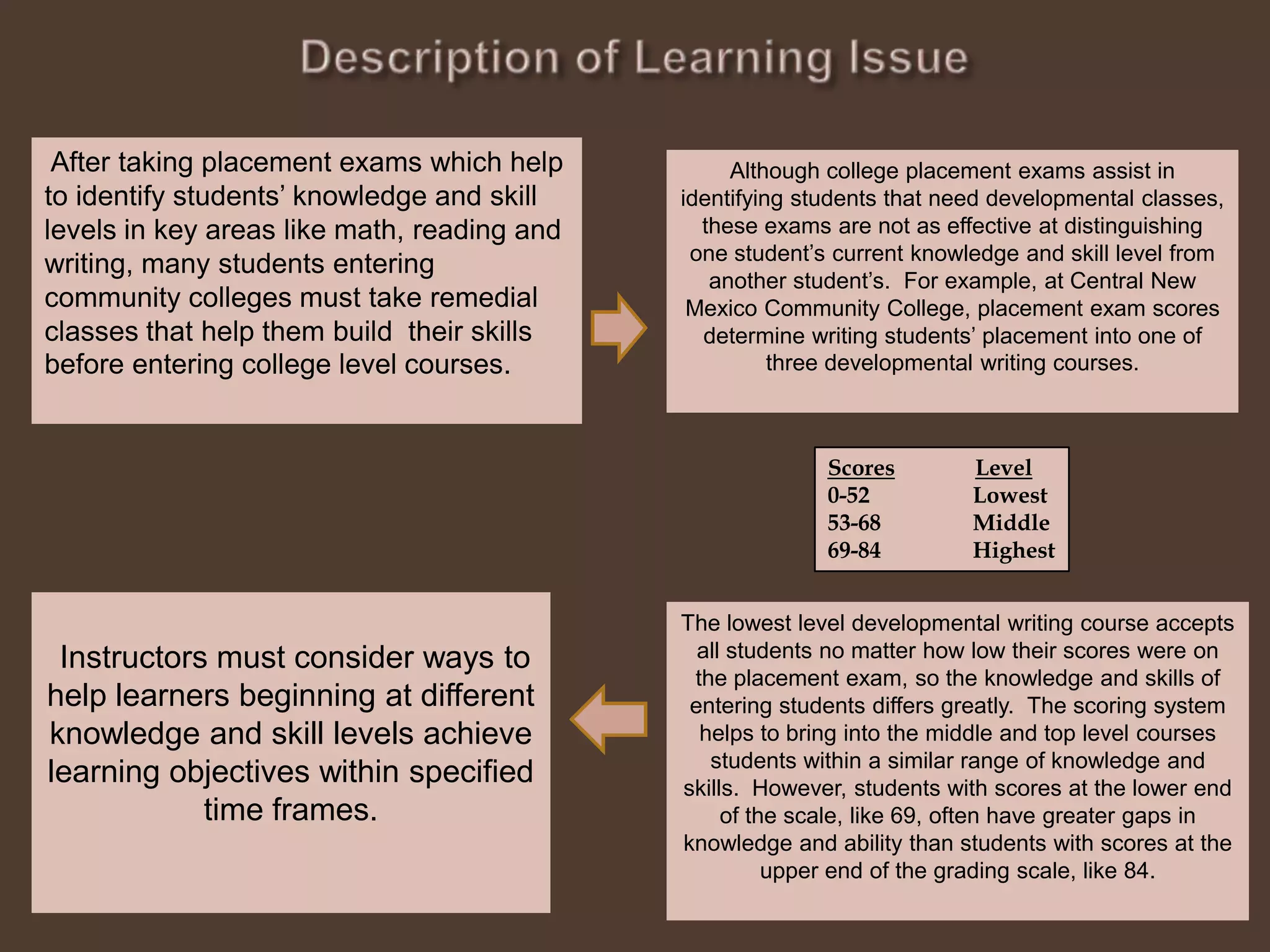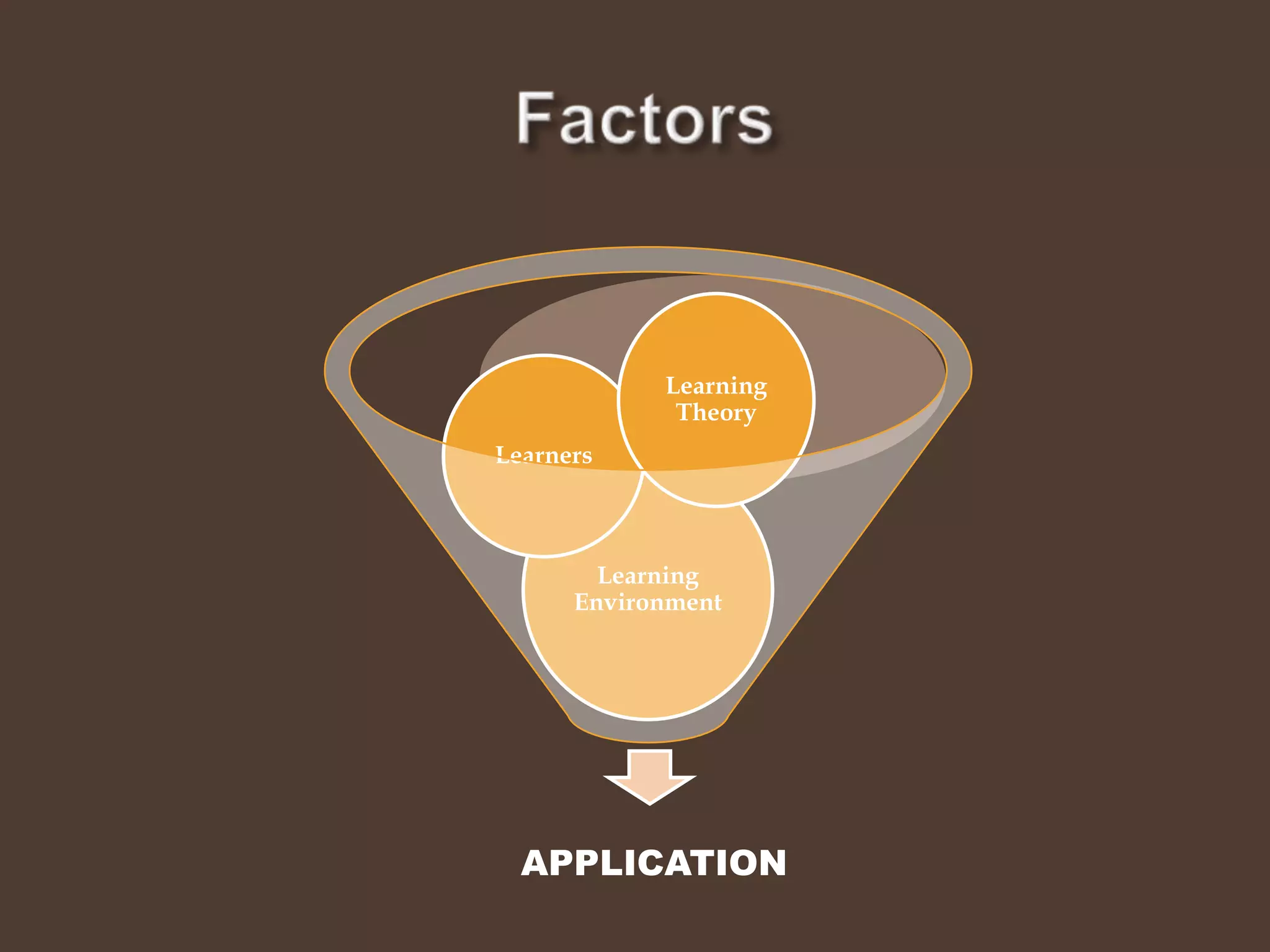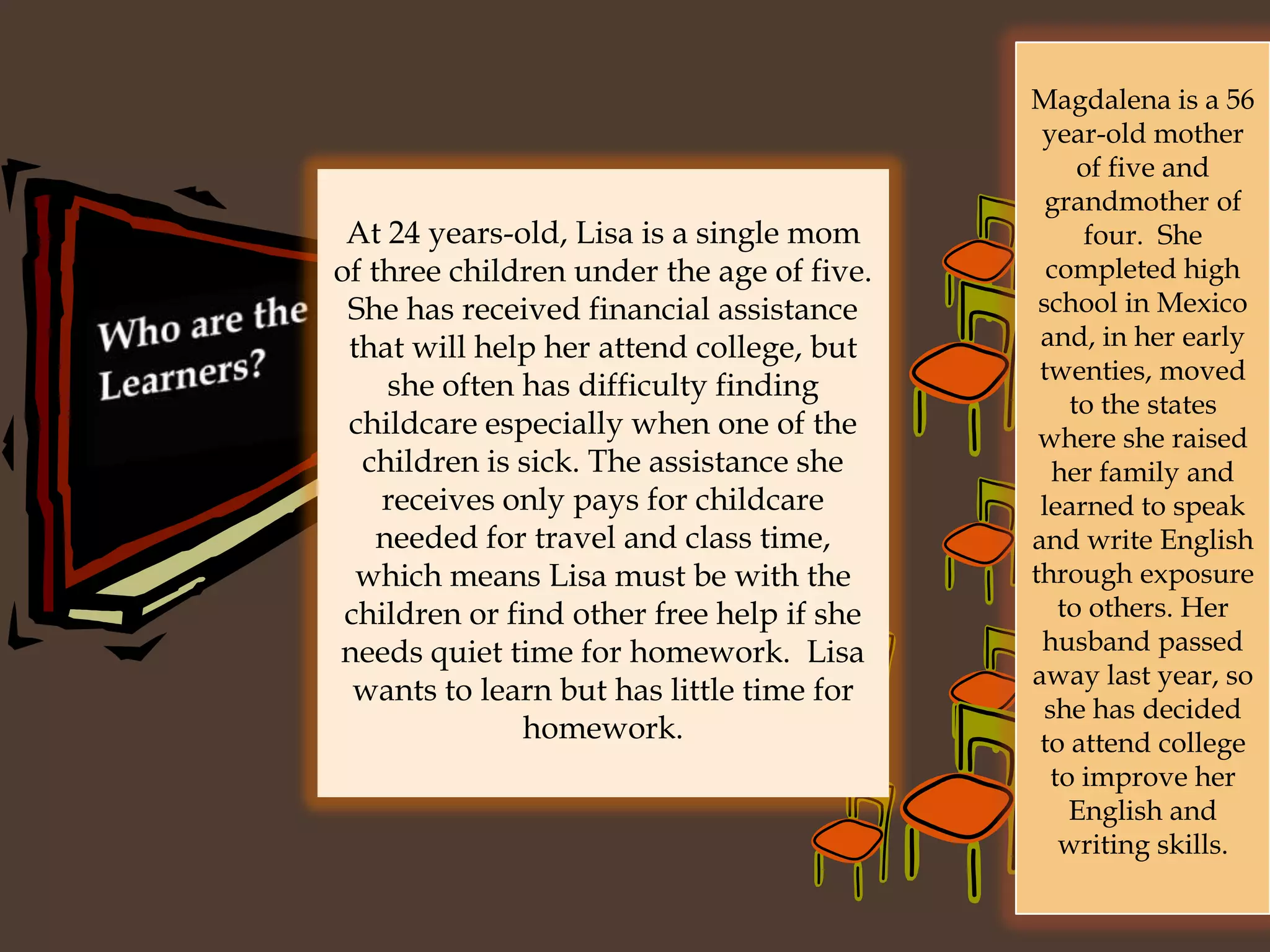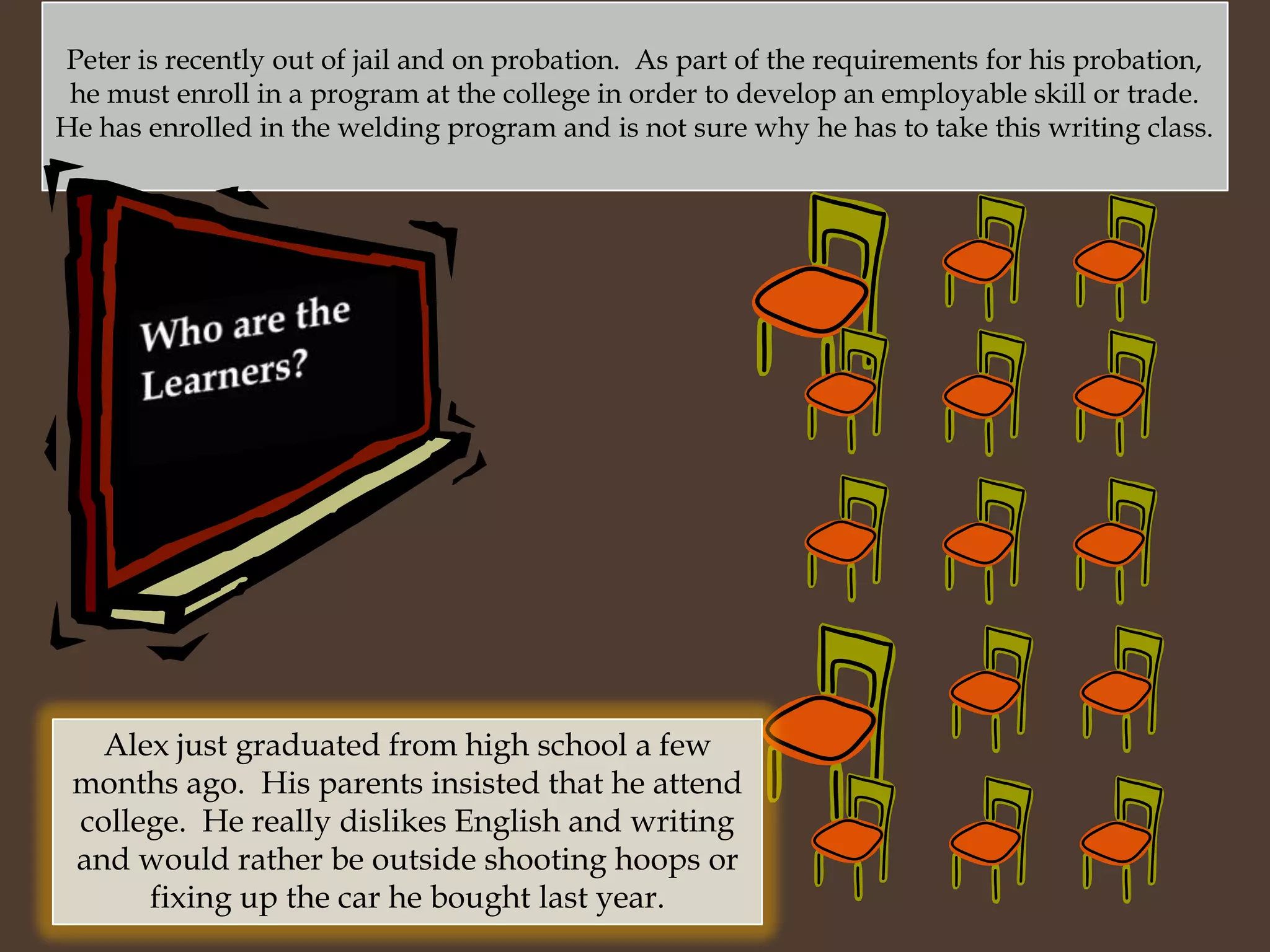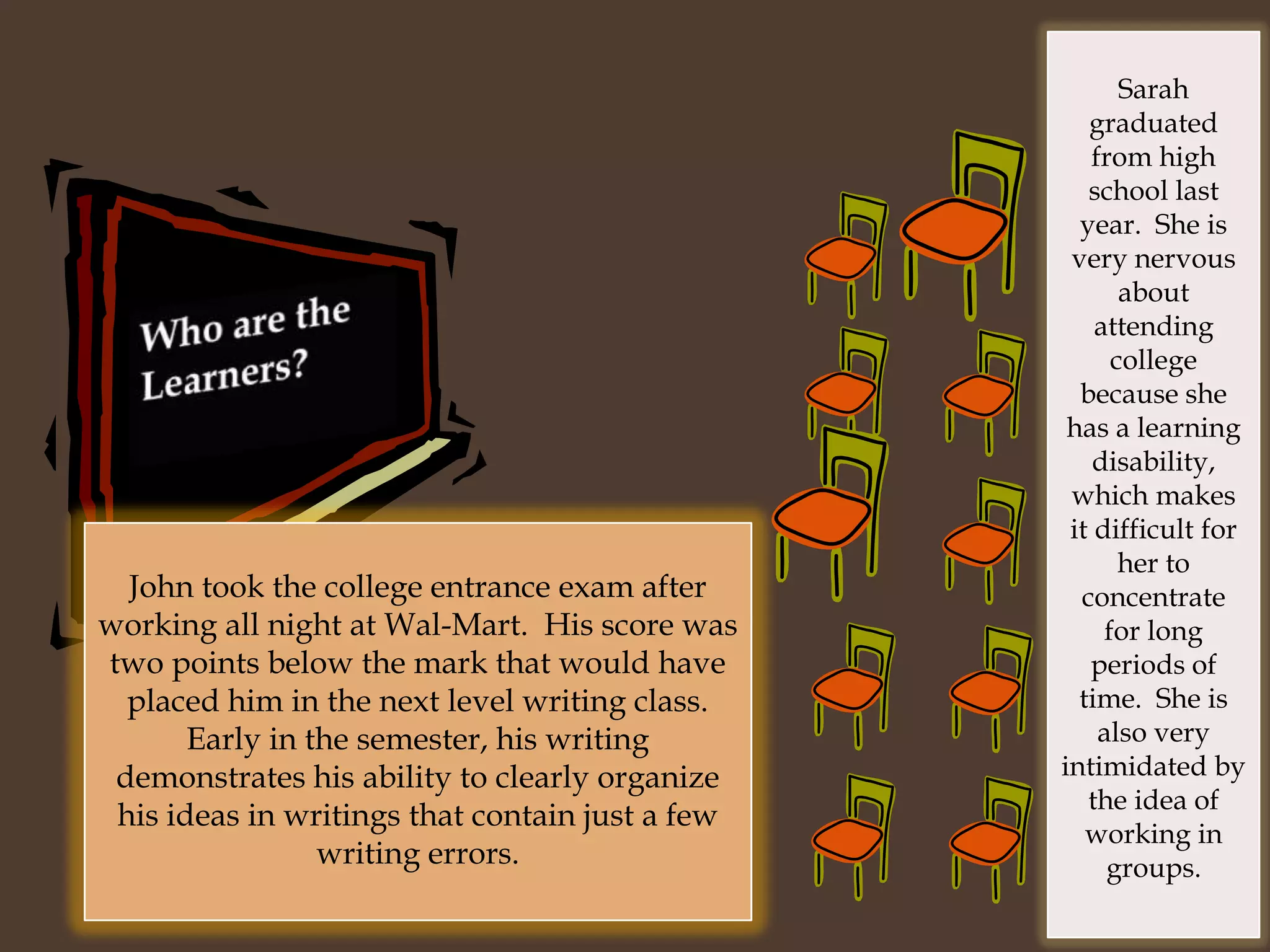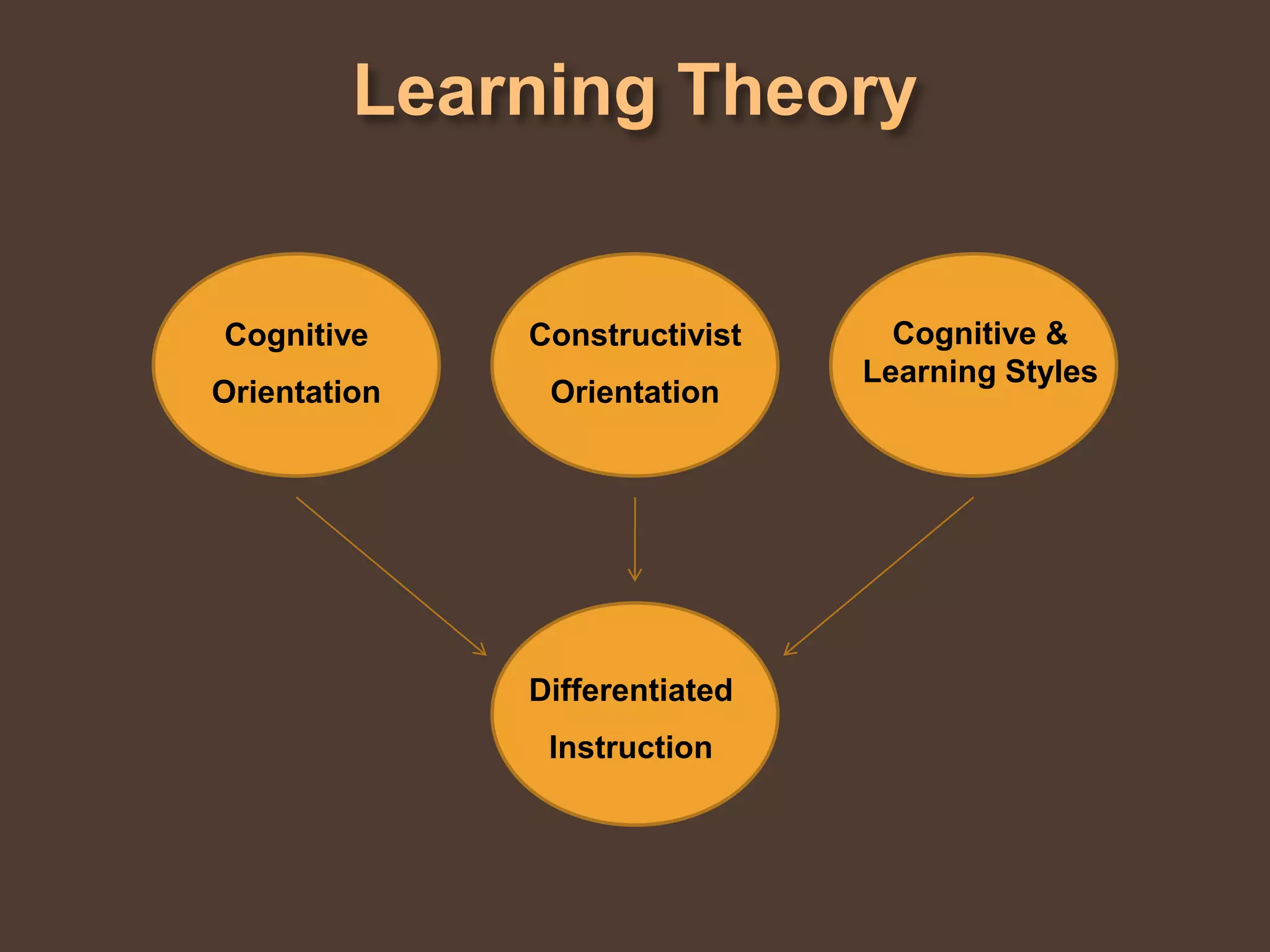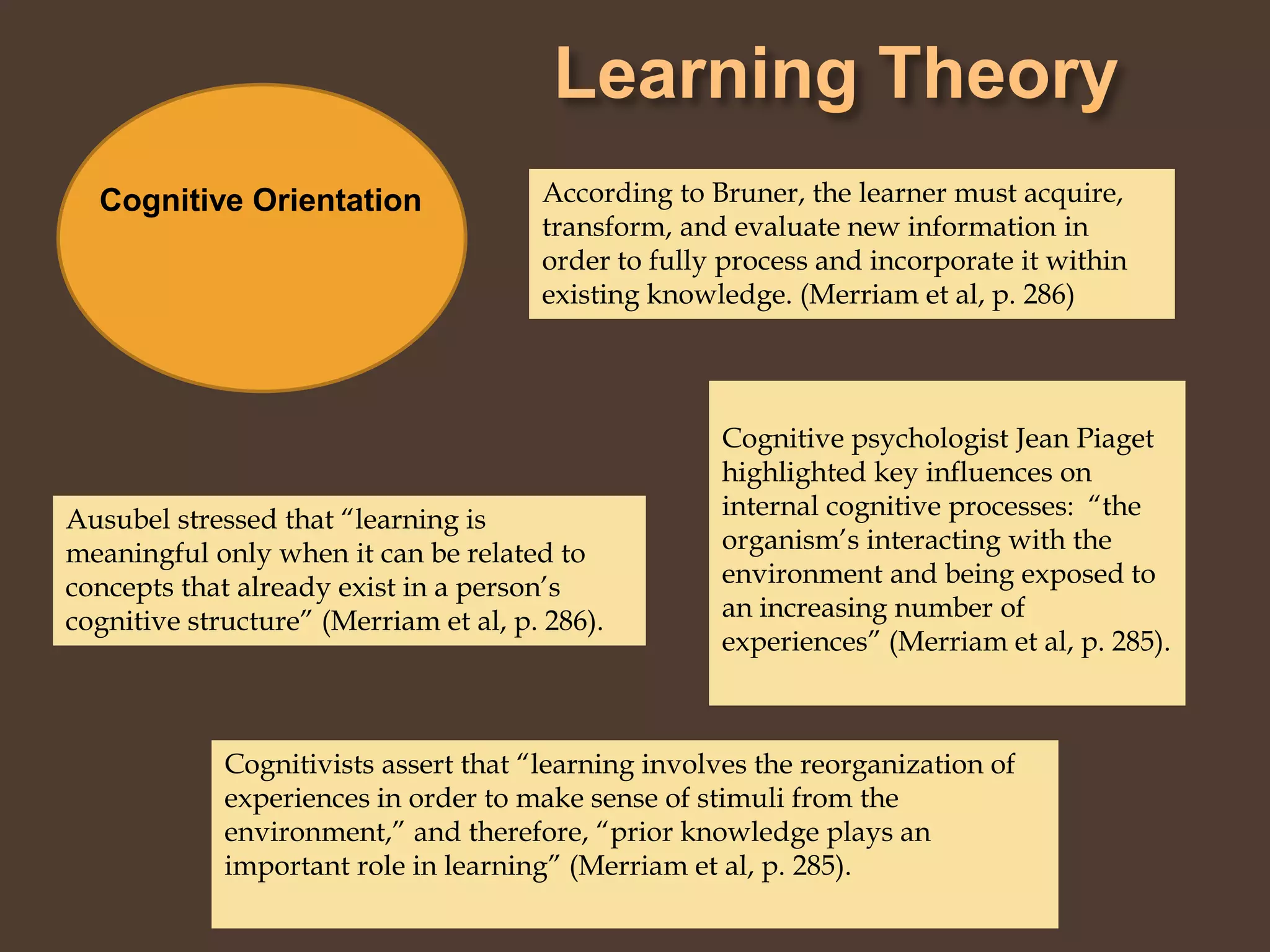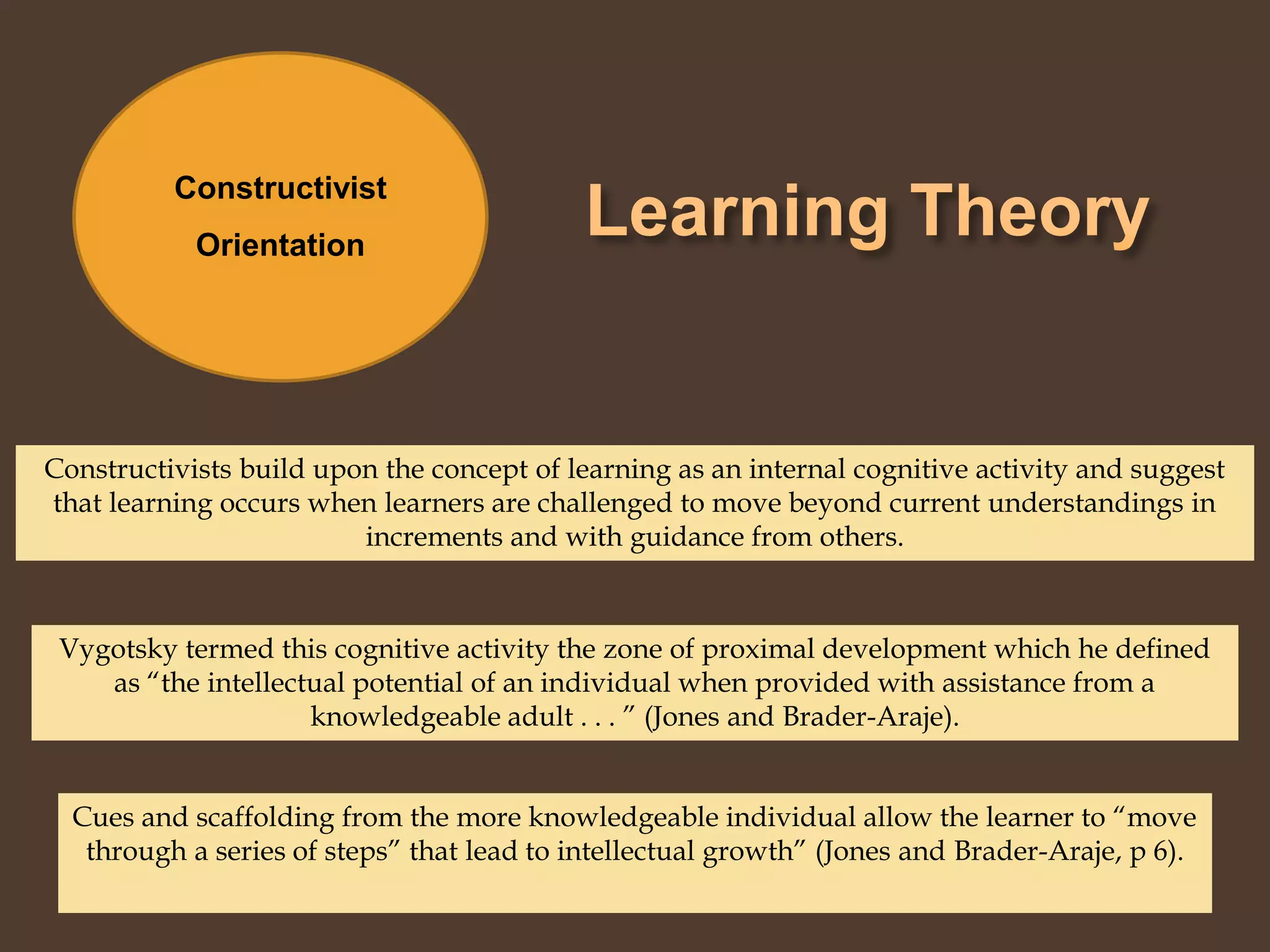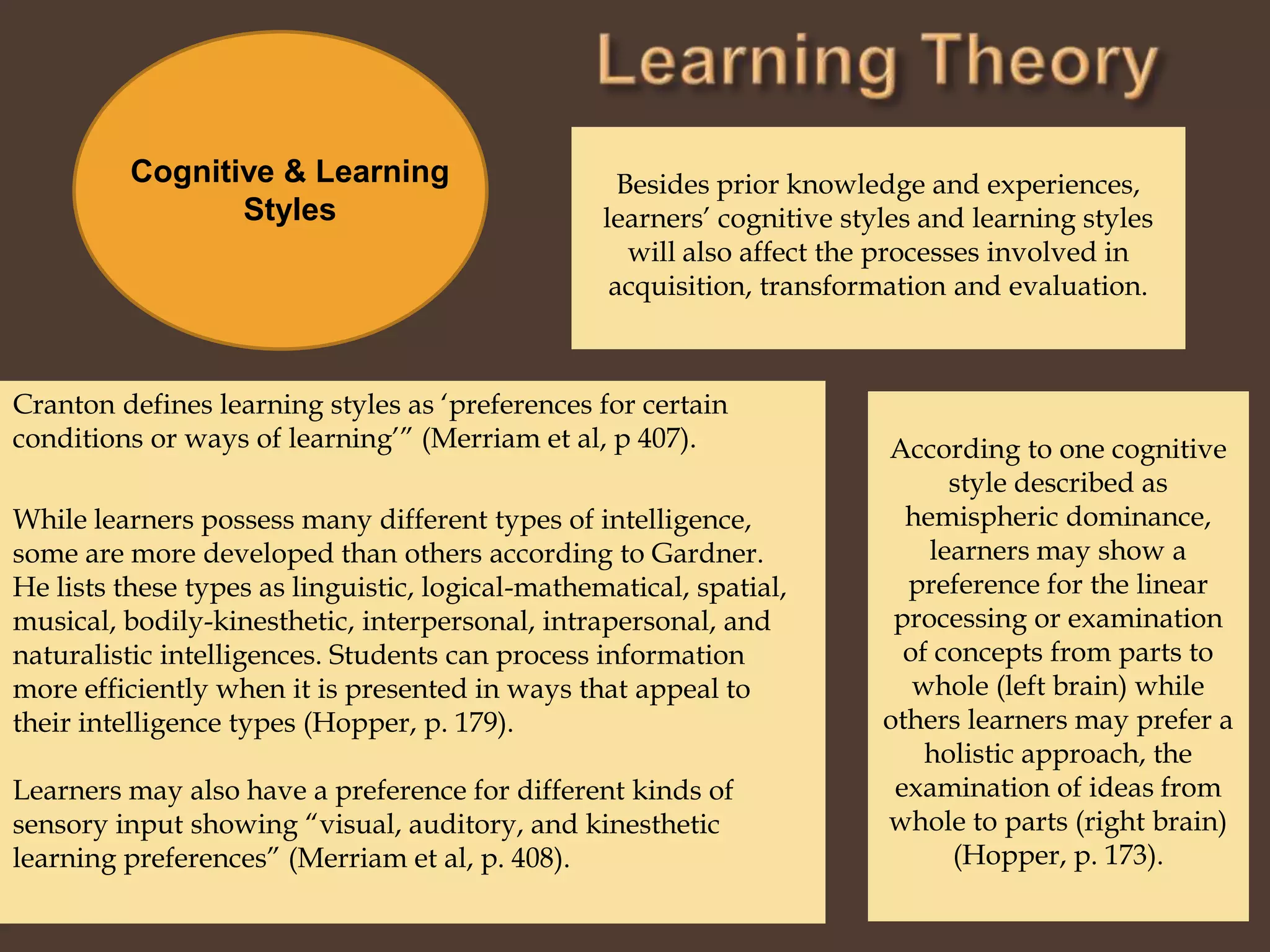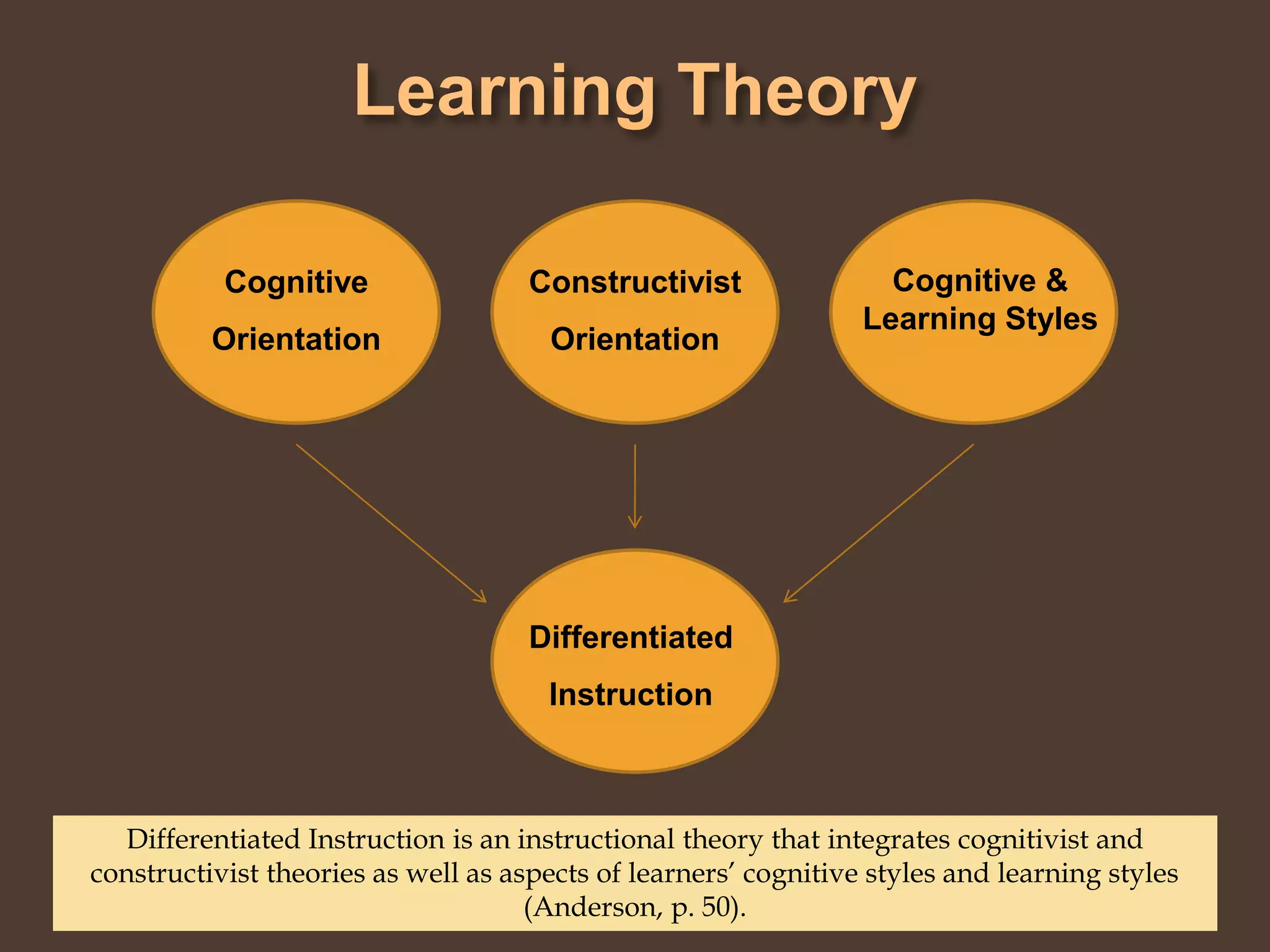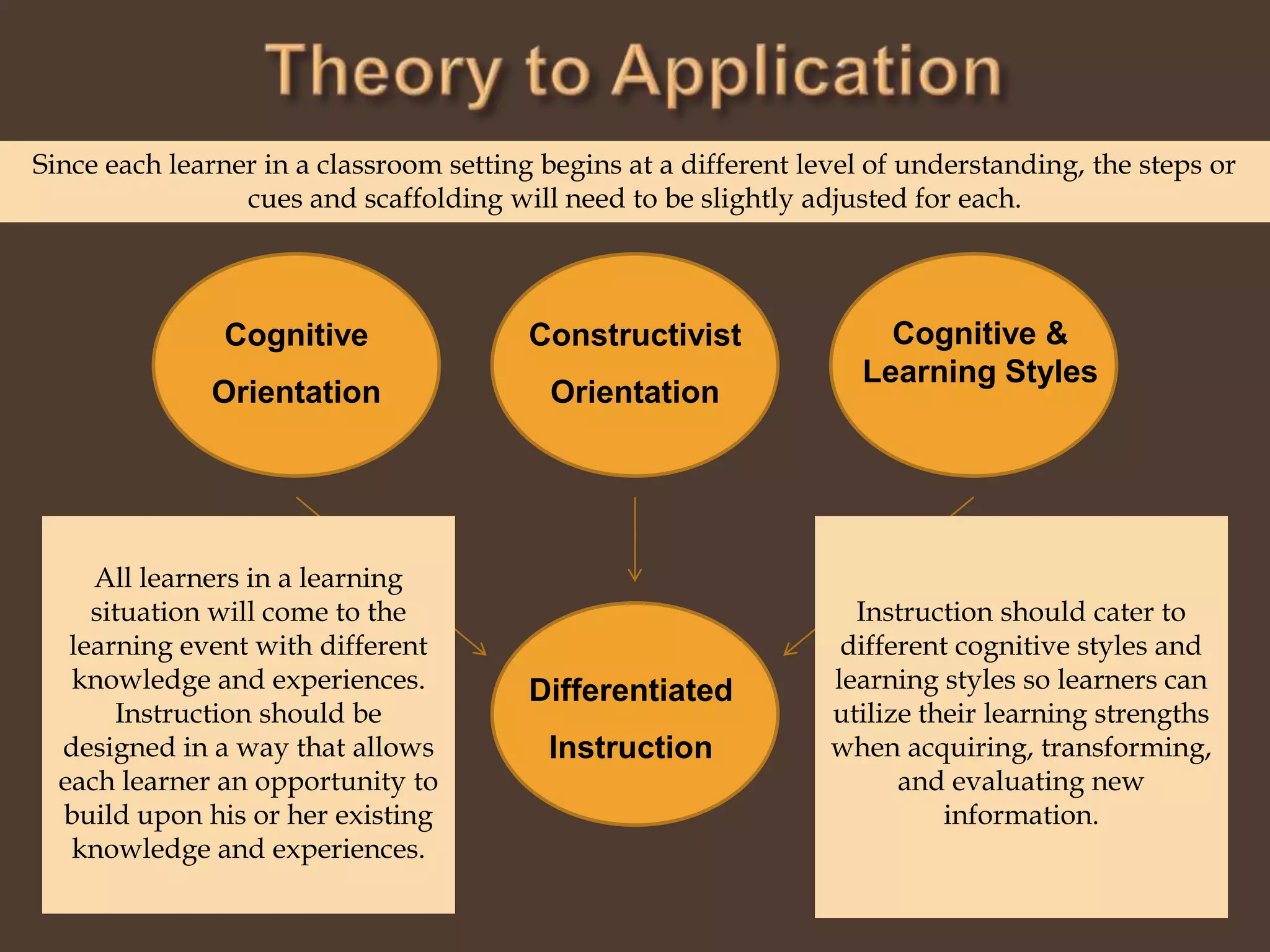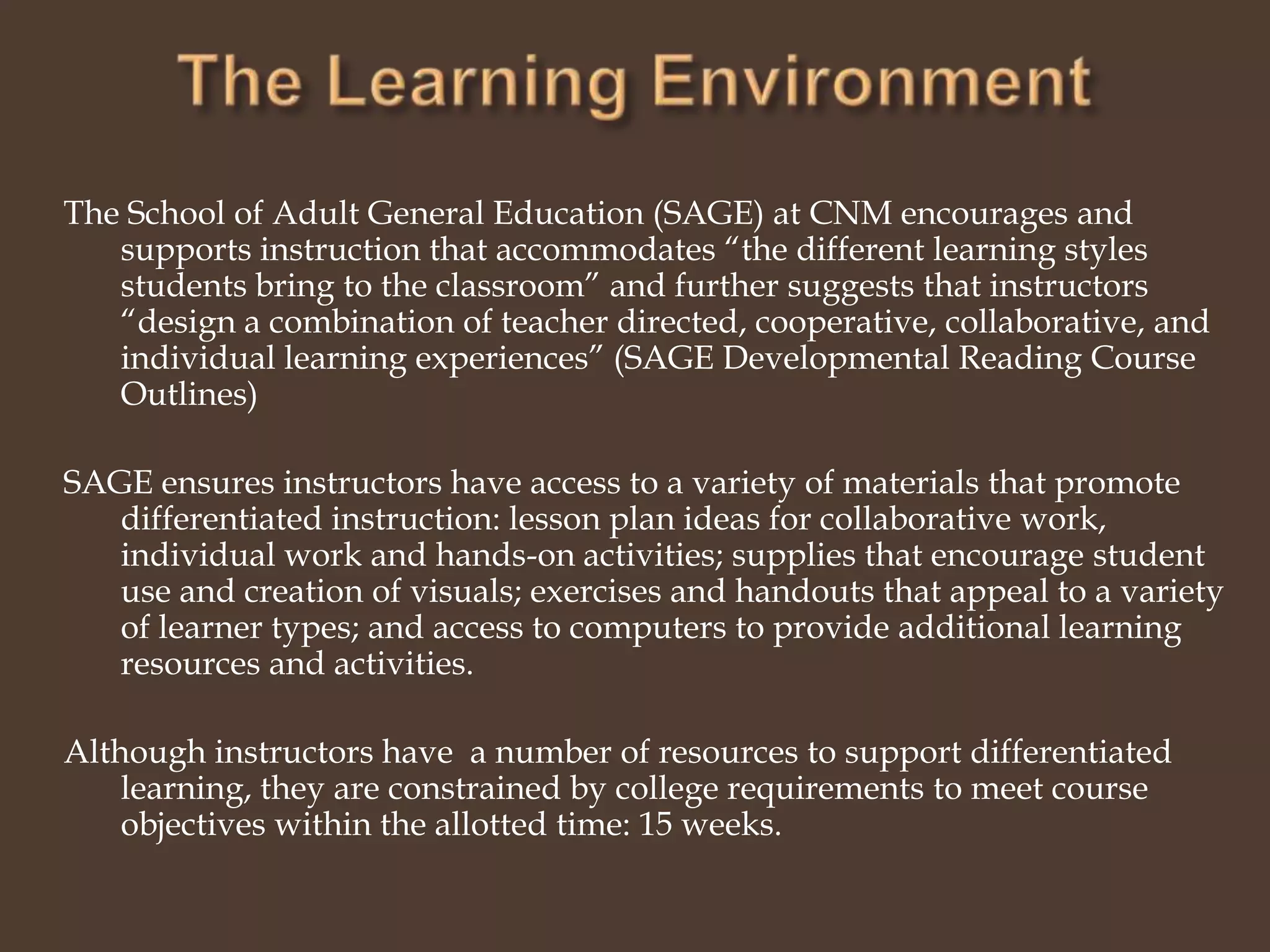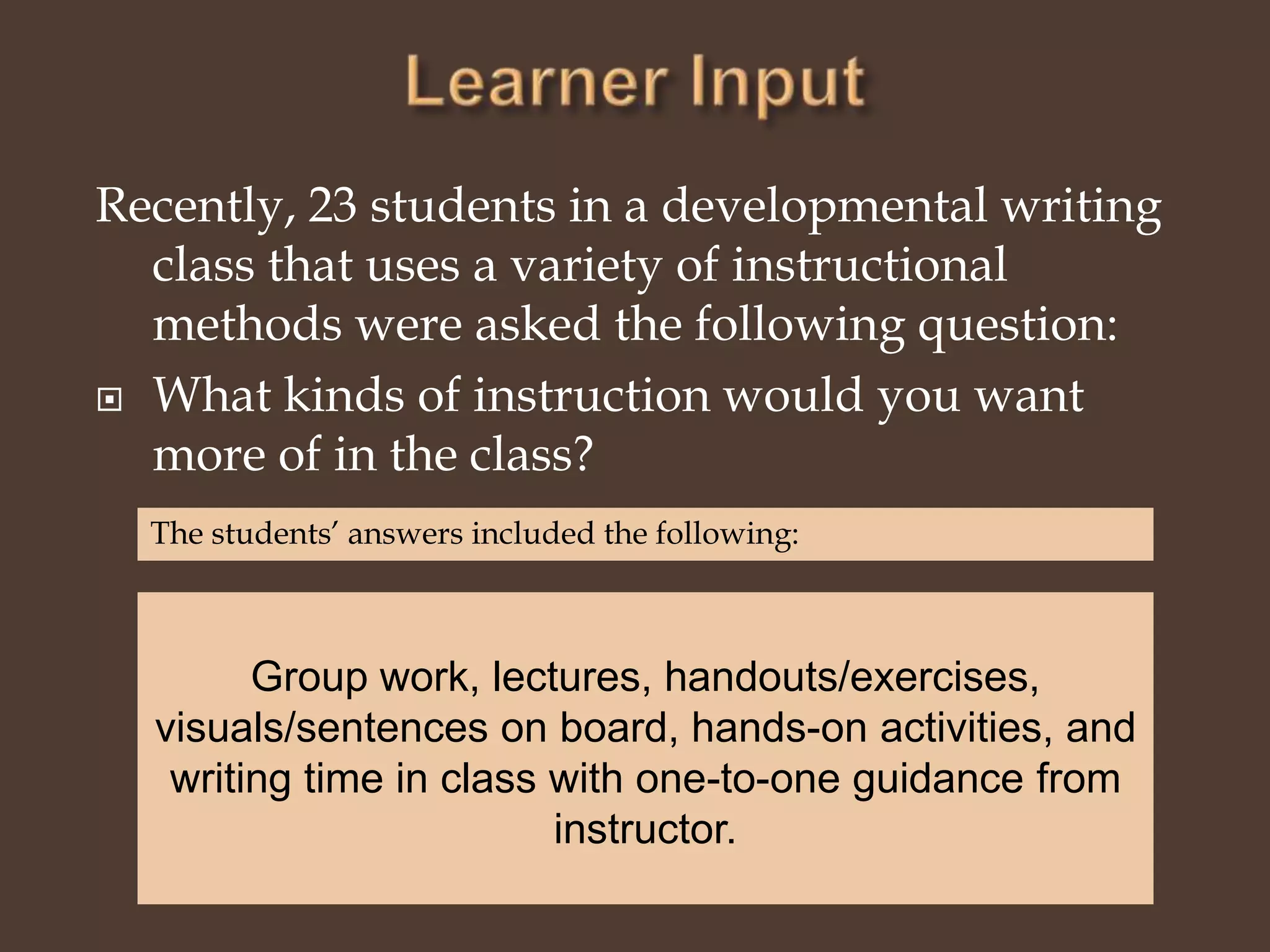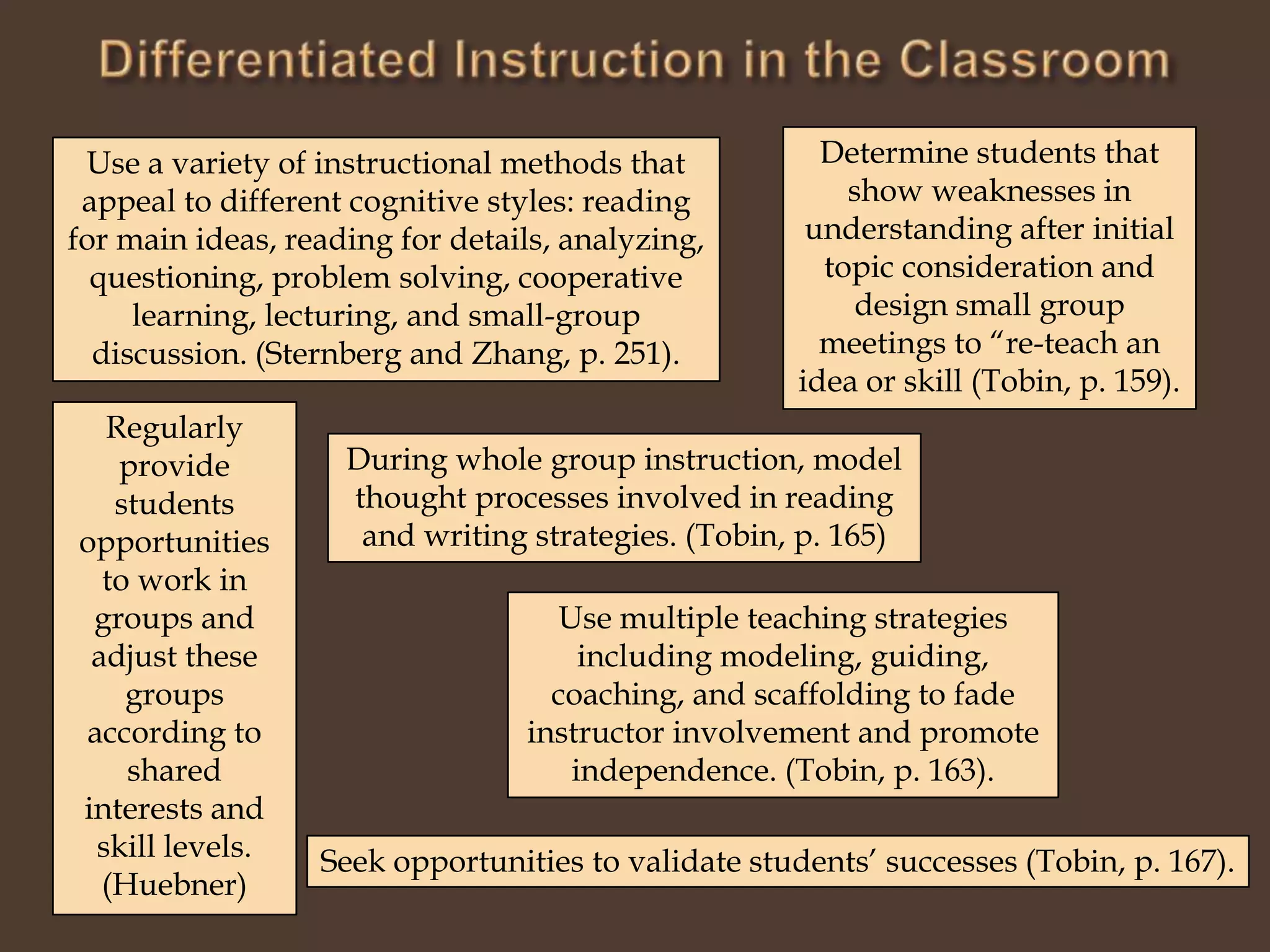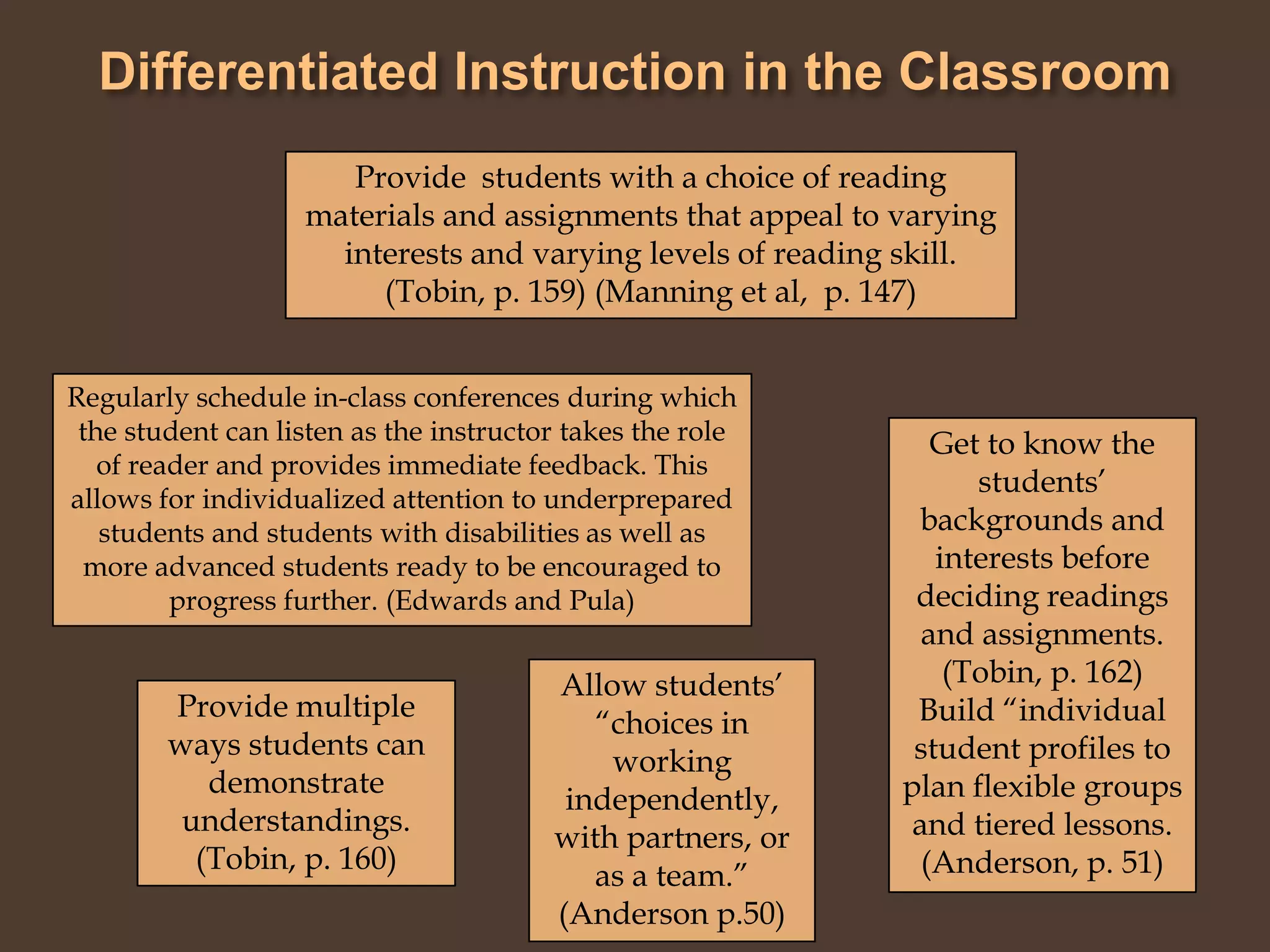This document discusses facilitating learning for diverse learners in a community college developmental writing course. It describes the range of knowledge and skills among entering students, from those functioning at a low level to a high level. It discusses learning theories including cognitive, constructivist, and differentiated instruction approaches. It proposes applying these theories through differentiating instruction based on students' cognitive styles, learning styles, and levels, including small group work, hands-on activities, and one-on-one guidance to help all students meet objectives.
